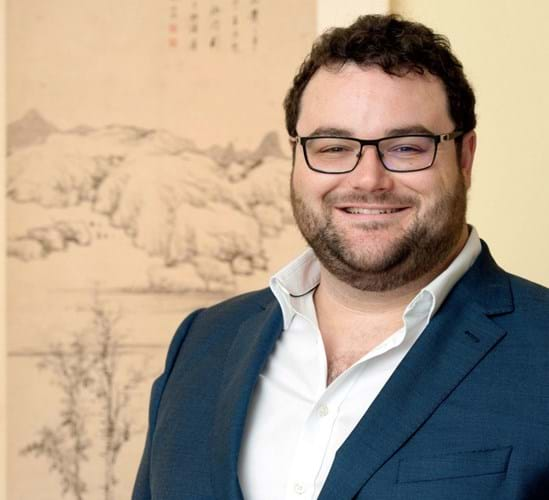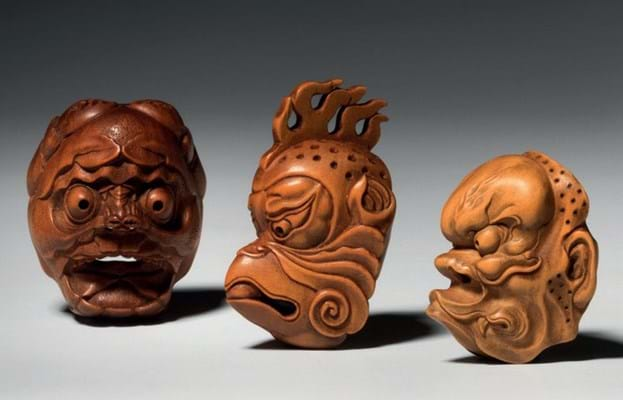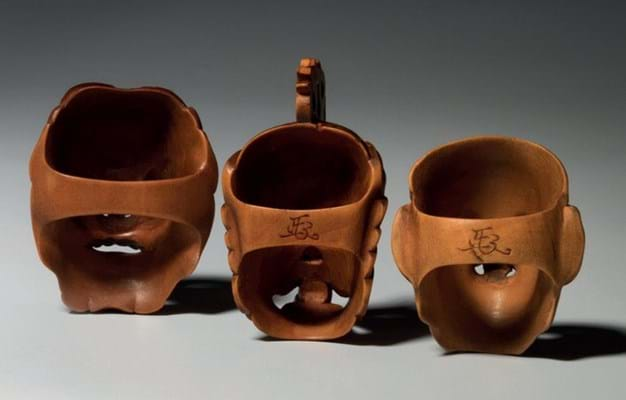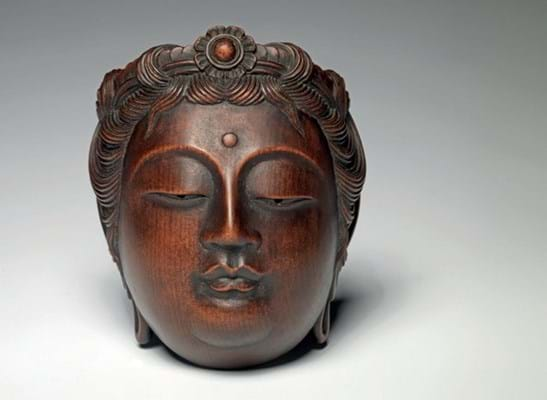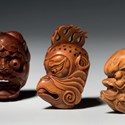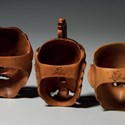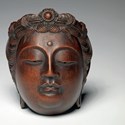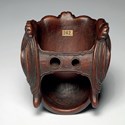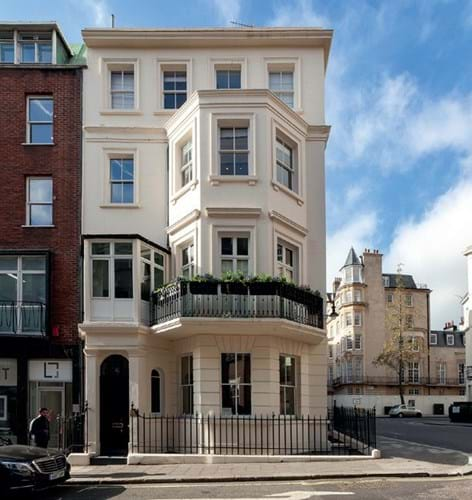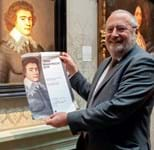ATG: It’s your gallery’s fourth time at TEFAF Maastricht this year. Do you feel like a ‘TEFAF stalwart’ by now?
Oliver Moss: Not quite! But we’re getting more and more visitors heading straight for our stand, expecting us to be there. The Sydney L. Moss business was founded in 1910 and so in terms of Asian art, we’re a stalwart company.
But I don’t feel like one of the TEFAF ‘old guard’ yet.
Can you sum up your mood as the packing for TEFAF Maastricht begins?
Hopeful, in a word. So far at TEFAF, we’ve sold enough things to make us want to keep going back and it has become the key event of our year.
My grandfather Sydney Leonard Moss (1893-1980) was a founder member of the Grosvenor House Antiques Fair, which we did for 64 years, and my father Paul used to do fairs in Hong Kong and New York but gave them all up. Whereas some events peter out, TEFAF hasn’t – it’s got oomph and longevity.
We’ve sent tickets to people who’ve bought previously and to key clients, but you can’t bank on client A or B coming. When it comes to choosing what to bring, though, you do have to bank on your instincts.
So, your star objects this year…
Our lead objects for TEFAF Maastricht this year are two large-scale Japanese wood Buddhist sculptures.
If I had to pick one, it would be Fudō Myō-Ō, ‘The Immovable’ (pictured above right), the protector of Shingon Buddhism.
He stands fiercely resolute, engulfed by a flaming mandorla, ready to vanquish evil with fire and steer people towards enlightenment.
The Fudō Myō-Ō, from a former temple collection, dates from the late 10th to early 11th century. This is one of my great discoveries of 2018.
Why the recent interest in Japanese wood sculpture?
In our opinion (and we’re not alone in this belief), Japan has produced the world’s greatest wood sculptures – the most expressive, powerful and well-preserved.
Only recently has it been legal to export the more important sculptures from Japan.
You don’t find such sculptures outside Japan, though there are great collections in museums in Minneapolis, Boston and San Francisco.
Last year we bought our Aizen Myō-Ō Buddhist sculpture at auction and took it to TEFAF Maastricht. That acquisition got us really interested in the genre, and we wanted to see if we could buy some more.
We’re seen as stocking expensive pieces but that’s not a problem because we aim to buy magnificent things Oliver Moss
Where did you acquire these sculptures? We went to Japan – myself and my dad (Paul Moss) – for 25 days last October, on an academic expedition.
We visited 40 temples, 15 museums and a castle, to immerse ourselves in Buddhist sculpture in its true home.
You can’t buy direct from the temples themselves, of course, but a few great Japanese dealers have these objects in strength and depth.
The trick is getting such dealers to show you the best.
We bought our Fudō Myō-Ō from one of the major old dealers in Kyoto, with whom we have a long-standing relationship because he had bought Chinese ceramics from my great-grandfather, Sydney.
We’re going back to Japan soon, coinciding with the abdication of Emperor Akihito on April 30, which will usher in a new reign period for Japan.
My star object:
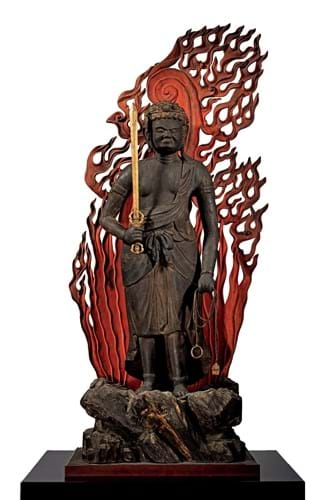
Japanese wood sculpture of Fudō Myō-Ō – ‘The Immovable’ – that Sydney L. Moss will be exhibiting at TEFAF Maastricht 2019. Image copyright: Sydney L. Moss.
This imposing Japanese wood sculpture of Fudō Myō-Ō – ‘The Immovable’ – dates from the late 10th to early 11th century, Heian period (794-1185). It stands at 50in (127cm) high with a provenance to Kōsan-ji Temple, Ikuchijima island, Hiroshima prefecture, collection no 18.
What else are you taking to TEFAF?
We’re mounting an exhibition of Japanese theatre masks and mask netsuke (see box, right). There are five other sculptures we bought on the Japan trip that we’ll unveil at TEFAF Maastricht. And as usual, we’ll be taking some special netsuke and inro bought in the past year. as well as some beautiful lacquer boxes.
We’ll also take some Chinese scholars’ objects, like bamboo brushpots, a wristrest and an ink stone – in other words, a smattering of interesting things that we know TEFAF visitors have a taste for.
Do you own everything you take to TEFAF?
No – some objects come with us on consignment. This year, just some netsuke and a few Japanese paintings. We agree with the owner on the price tag, including the percentage we add on for our services and any import tax.
How will the tax regime change for you post-Brexit, when moving objects in and out of the EU?
The answer is, nobody knows as there is no certainty around how ‘out’ of the EU we’ll be. If we’re outside the customs union, there’s hope we won’t have the 5% EU import tax.
However, I’ll wager the UK government will keep levying that tax. My feeling is that whatever the deal with Brexit, buying and selling to the Continent won’t get any cheaper.
What is the price range of objects on your stand?
We are perceived as stocking expensive pieces, but I don’t see that as a problem because we aim to buy magnificent things. For instance, we’re bringing signed Chinese bamboo brushpots, which are rarely seen at TEFAF. They can go for hundreds of thousands of pounds, even at UK auctions.
We don’t put prices on the object labels but they can be seen in a book on the stand that also has condition reports.
And detail on provenance, presumably…
Of course. We’ll name the collection an object has come from – if we have permission to do so – to give it added weight and interest. As for auction history – which is publicly available information – that’s not provenance, which is about who’s owned the object. Auction price often has nothing to do with an object’s actual value.
Is the vetting day a tense one for you and your team?
We’re required to vacate the premises for a day and this year we plan to visit Cologne, so the answer is, no! But when you return, you don’t want to see a note from the vetters asking for clarification.
How do you avoid that scenario?
We gather as much detail for vetters as possible ahead of time, including having all the sculptures up to c.1650 scientifically tested using C14 radiocarbon dating.
I believe TEFAF’s curator-only vetting approach is good, in that it removes the competitive element that may come with dealers – and auctioneers – assessing your stock.
What do you think about the Japanese market in particular, which has been in the doldrums? If auctions are any guide, the big houses like Sotheby’s are introducing their auctions in Japanese art again. Japanese art is still ‘cheap’ and great value.
Finally, could you share one thing about TEFAF Maastricht that new visitors might not know about, but should?
That it takes days to cover properly! TEFAF Maastricht is one of those bucket list things to do if you’re a serious collector and if you intend to buy, you need to know that it’s a huge fair.
You’ll require two days to view and maybe a third for final consideration before buying.
The maker behind the mask: an exhibition by Sydney L. Moss
At TEFAF Maastricht 2019, Sydney L. Moss will mount an exhibition of theatre and netsuke masks, aimed at highlighting their sophistication and vibrancy.
The demand for finely crafted masks gave rise to professional mask carvers who worked closely with actors to produce bespoke pieces.
The three masks pictured here were once part of the collection of Peter E Müller, Küsnacht, Switzerland.
Key facts Sydney L. Moss: an evolution
Founded in 1910, four generations of the Moss family have run the Chinese and Japanese art gallery located on Queen Street, Mayfair, London W1 since 2008.
Oliver Moss assumed control of the gallery from his father Paul, who retired a year ago. Paul’s expertise will still be drawn on, especially around research and acquisitions. In his 38 years as proprietor, Moss senior moved the gallery away from Chinese ceramics towards literati Chinese arts and the arts of Old Japan.
As to making his own mark, Oliver is heading back to Japan in April for inspiration. Japanese sword furniture has piqued his interest, though “it will take me years to get on top of,” he says.


